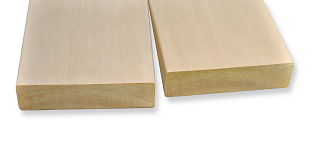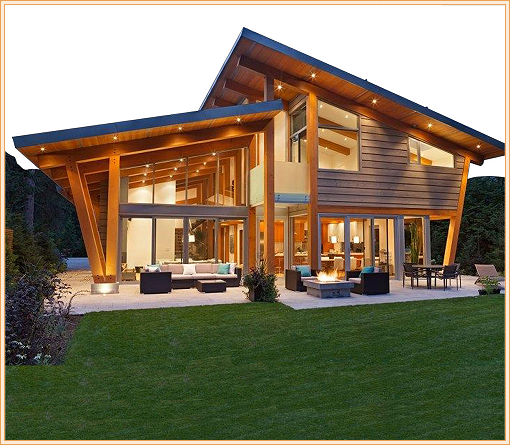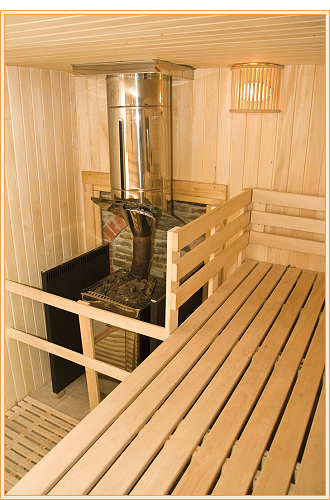
Denali Cedar is the premier brand of wood products manufactured from Alaskan yellow cedar (Chamaecyparis nookatensis). The portfolio includes decking, porch flooring, trim, siding and patterns. The finish quality of Denali Cedar makes the most of the exceptional properties of this beautiful cedar. Alaskan yellow cedar is the "gold standard" of cedars. It offers remarkable performance and a stunning appearance. Compared with other cedars, it outshines them all!
Cedar Type
Hardness
Sliver Resistant
Raised Grain
Decay Resistance
Extractives
Alaskan Yellow
580
Yes
No
High
No
Western Red
350
No
Yes
High
Yes
Incense
390
No
Yes
High
Yes
Northern White
320
Yes
No
High
No

Cedar That is Naturally Decay Resistant
Denali Cedar is rated highly decay resistant by the USDA Forest Products Lab. It is the optimum choice for outdoor use, decks and railings, exterior trim and architectural details, porch flooring and stairs. In addition, Denali Cedar is ideal for coastal locations. There is no chemical treatment.
Pleasing Appearance
The appearance of Denali Cedar is pale yellow to golden honey hues. Fine texture with tight grain and a smooth, even finish. The attractive uniform color, left natural, turns to soft silver gray and is splinter resistant.
Strong Yet Light
Strength compares to Port Orford cedar and Douglas Fir, and is very easy to work with.
Stable Cedar
Decking and trim stay straight and true. Machines easily to offer a range of patterns.

Denali Cedar is proudly produced by Oregon Industrial Lumber Products. The company offers Douglas Fir in addition to Yellow Cedar, selling from 12 million to 15 million board feet of lumber per year total. At a given time, the company carries about 3 to 4 million board feet of both types of lumber combined.
"OILP has grown a great reputation as a top quality manufactuerer that can be counted on by its customers to provide timely products that consistently meet or surpass their expectations," observes John McDowell, vice president. "The most outstanding feature of our products is that all of the processing takes place at our facilities, from green to kiln dried and surfaced. This allows for great quality control."
When John's father, Murray McDowell, bought the company in 1983, it was primarily dealing just in Doug Fir and a little bit of Hemlock with some Red Cedar included. Andrew Jones, Yellow Cedar sales manager, recalls the change of emphasis to Yellow Cedar. "The current dynamics of the Yellow Cedar market has its roots in Japan after World War II. The Japanese planted massive plantations of Hinoki Cedar, a substitute for Yellow Cedar. They had natural forest stands of those trees," he remarks. However, the Japanese widely cut down those trees. In their place the Japanese imported Yellow Cedar from Canada. But 60-70 years later, the Hinoki Cedar stands in Japan had grown back, and the Japanese importers told forest products groups in Canada they wouldn't need the wood; or only half of the previous shipments. (The Japanese government subsidizes the use of wood fiber grown on Japanese soil, crowding out Yellow Cedar.)
Producers of Yellow Cedar were forced to look for new markets with wood they had expected to export to Japan. The Hinoki Cedar is "not just going away anytime soon," Andrew Jones explains. At that time, some larger producers of Yellow Cedar looked to the North American market to move merch grades in good volume. The timing and market conditions were stellar in 2014 "and we were able to take advantage and fill that gap," Jones comments. The move to Yellow Cedar was "an opportunity," especially since Canadian Yellow Cedar is expted to continue being available in the North American and U.S. markets.
Why is there such a demand for Yellow Cedar? Yellow Cedar has a very distinct look and color. As it ages, it greys over time and looks beautiful. It's extremely rot-resistant and durable. It's great for environments that are exposed to constant water. The resistance to the elemtns and the fact that is doesn't silver makes for great decking. It also surfaces really well and looks amazing as pattern stock for use both indoors and out. Excellent uses for Yellow Cedar also include paneling, flooring, door and window parts and saunas.